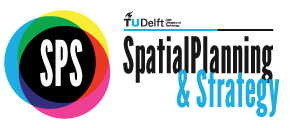This text was originally published at CITISCOPE
How do you teach the New Urban Agenda?

A presenter[ Dr. Wolfgang Stempfer (Austria) GB*: Gebietsbetreuung Stadterneuerung, City of Vienna] speaks at the education-focused Urban Thinkers Campus at TU Delft in the Netherlands, 7 June. (UTC TU Delft)
As cities boom around the world, so will the number of people who study them. With the ranks of university urbanism, planning, architecture and design programmes swelling, especially with students from some of the rapidly urbanizing corners of the world, new teaching points might be in order.
That was the conclusion of Roberto Rocco, assistant professor in the Department of Urbanism at the Delft University of Technology in the Netherlands. Recently at TU Delft, as it’s known, Rocco convened a conversation to ask whether last year’s voluntary global agreement on urbanization could offer lessons for the classroom. The agenda was finalized in Quito at the Habitat III conference.
Rocco’s effort was conducted under the aegis of the Urban Thinkers Campus initiative, a global network of events coordinated by the World Urban Campaign to promote public dialogue about the future of cities.
Citiscope’s Gregory Scruggs spoke to Rocco via Skype from his office at TU Delft. This interview has been edited.
Gregory Scruggs: Why do you think the New Urban Agenda needs to be shared with the next generation of urbanism professionals?
Roberto Rocco: I am a planner myself. I went to Quito, I took part in several sessions, and I thought, wow, this is a really great opportunity to bring this discussion in a more substantive way to the profession. TU Delft is a big center for two topics: water and housing. Both are really central in the New Urban Agenda. Our role is to discuss education.
[See: In India, training the next generation of urbanists]
Q: What strategies did you come up with to integrate the New Urban Agenda into planning education?
A: The main message was: We have to collaborate with cities. We shouldn’t stay within our institution. We need to reach out to cities and see what they need.
We are very fortunate here. The Netherlands doesn’t have big urban challenges. In the Netherlands, the government is really open to collaboration.
The challenge for us would be to get collaborations from cities elsewhere to whom we could provide our expertise — for example, in water management, water-sensitive design, housing and transport — and to offer our specialty, this combination of design and planning that we do here.
Q: Are there particular places that your students come from that have similar water-sensitive design challenges, for example, where you hope to start forging the connections with cities that you just described?
A: Yes. The main places our international students come from are exactly the places where urbanization is happening now. Twenty-five percent of our masters students come from China, and we have a huge group of Indian students. Also, TU Delft has an initiative called A for Africa; we are really trying to focus our resources on improving our relations with Africa, which are at the moment not very strong. We want to concentrate on sub-Saharan countries: Nigeria, Ethiopia and Kenya. Latin America, as you know, is almost entirely urbanized, so what they need is urban reform. But really the challenge is in these places where urbanization is happening right now — these are the places where we expect to have more impact.
Q: How did your students respond to the New Urban Agenda? Did they find it to be a new set of ideas, or was it something they already felt they were learning?
A: Before the Urban Thinkers Campus, we had a series of lectures and encounters with people, some of whom participated in the creation of the Urban Agenda, like Frank D’hondt from the International Society of City and Regional Planners.
The students’ first reaction was: Oh my god, this is too general. It’s all a list of good intentions. But then when you explore further and you explore the concepts and the words, then they understood that it’s not that general. It actually has some good directions. Still, what can we do? How can we be more precise about the task at hand?
[See: Urban planning — linchpin for sustainable urban development?]
A lot of what is being said in the New Urban Agenda is already integrated in what we do — so we are talking about spatial justice a lot, we are talking about the right to the city. And we are talking a lot about governance and how to deal with different stakeholders and participation. We need to derive teaching points from the New Urban Agenda, which we haven’t really done during the Urban Thinkers Campus.
Q: Do you anticipate coming up with those kinds of teaching points? For example, those that be useful for urbanism, planning and design schools in the developing world that might be in the midst of developing their curricula?
A: My hope is that we can come up with a very simple list of teaching points that people could discuss. Every school has different capacities, but the issues that I mentioned — like governance, how to deal with stakeholders, how to involve different sectors of society, how to use design as a negotiation tool to achieve some of those objectives — my hope is to come up with this list of topics that you can teach, derived from the New Urban Agenda.
Stay up to date on global progress toward creating sustainable cities! Sign up for Citiscope’s email newsletter here, or follow us on Twitter, Facebook or LinkedIn.
